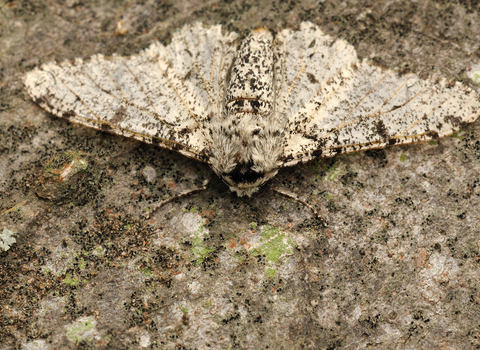
©Amy Lewis
Peppered moth
The peppered moth is renowned for its markings that have evolved to camouflage it against lichen in the countryside and soot in the city. It can be seen in gardens, woods and parks, and along hedgerows.
Enw gwyddonol
Biston betulariaPryd i'w gweld
May to AugustGwybodaeth am rywogaethau
Categori
Ystadegau
Wingspan: 4.4-5.6cmCommon.
